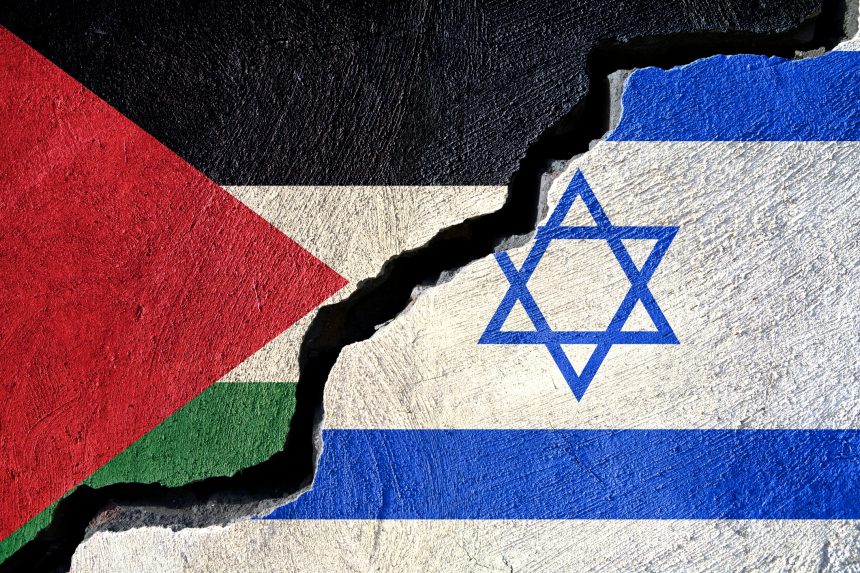The Israel-Palestine conflict over the West Bank and Gaza Strip has been a long-standing and complex geopolitical issue. The competing claims to land and self-determination by both Israelis and Palestinians have resulted in decades of violence, political stalemates, and failed attempts at resolving the conflict. One proposed solution that has gained international attention is the concept of a two-state solution, where Israel and Palestine would coexist as separate, sovereign states. This article seeks to examine the viability and effectiveness of the two-state solution as a means to end the Israel-Palestine geopolitical war.
Historical Background
To understand the Israel-Palestine conflict, it is essential to delve into the historical context. The roots of the conflict can be traced back to the late 19th century when Zionist Jews began migrating to Palestine, seeking to establish a Jewish homeland. This led to tensions with the indigenous Arab population, resulting in sporadic violence and political unrest.
The United Nations partition plan of 1947
Following the end of World War II and the Holocaust, international sympathy for the Jewish people led to the United Nations’ proposal for the partition of Palestine into two states in 1947 – one Jewish and one Arab. While the Jewish leadership accepted the plan, the Arab states rejected it, leading to a war between Israel and neighbouring Arab countries. Israel emerged victorious, occupying territories beyond the borders prescribed by the partition plan, including the West Bank and Gaza Strip.
The Occupation
Since the 1967 Arab-Israeli War, Israel has maintained control over the West Bank and Gaza Strip, leading to the establishment of Israeli settlements and a military occupation that has resulted in significant human rights abuses, restrictions on movement, and economic disparities. The Palestinians have sought self-determination and statehood, leading to numerous uprisings, negotiations, and peace agreements, all ultimately failing to bring about a lasting resolution.
The Two-state Solution
The two-state solution proposes the establishment of an independent Palestinian state alongside Israel, with defined borders based on pre-1967 lines, including land swaps to accommodate Israeli settlements. Advocates argue that this solution would address the aspirations of both Israelis and Palestinians, allowing for self-determination and an end to the occupation.
Viability and Challenges
While the two-state solution has gained international support, its viability and challenges remain significant. One of the main obstacles is the issue of Israeli settlements in the West Bank. The continued expansion of settlements makes it increasingly difficult to establish a contiguous Palestinian state, raising doubts about the sincerity of Israel’s commitment to a two-state solution.
In addition, Jerusalem, considered a holy city by both Israelis and Palestinians, presents another major challenge, especially in the religious aspect. Both parties claim Jerusalem as their capital, making any resolution on its status highly contentious. The question of the right of return for Palestinian refugees is also a significant point of contention, as it raises concerns about demographic shifts and the stability of Israel as a Jewish state.
Additionally, the political divisions among Palestinians themselves add to the complexity. The West Bank, governed by the Palestinian Authority, and the Gaza Strip, controlled by Hamas, have differing ideologies and political goals, making it difficult to form a unified Palestinian front in negotiations with Israel.
The Potential Solution
The two-state solution is often seen as a potential solution to the Israel-Palestine geopolitical conflict due to several reasons. Let’s consider the following results that may be derived from adopting the proposed measure:
1. Self-determination and sovereignty: The two-state solution allows both Israelis and Palestinians to have their own independent states, which can foster a sense of self-determination and sovereignty for both parties. This can help address their national aspirations and provide a framework for peaceful co-existence.
2. Resolving territorial disputes: The two-state solution aims to establish clear borders for both Israel and Palestine, to help resolve territorial disputes. By delineating borders, it can provide a basis for the peaceful division of land and resources between the two sides.
3. Promoting security and stability: A two-state solution can contribute to stability and security in the region. By having clearly defined borders and a mutual recognition of each other’s sovereignty, it can reduce tensions and the risk of conflict between the two parties.
4. Preserving democratic values: The measure in question would ensure the preservation of democratic values and principles. It would allow both Israelis and Palestinians to govern themselves and make decisions according to their own democratic processes, respecting the rights of their respective populations.
5. International consensus: The two-state solution has gained significant international support and is seen as a viable path towards resolving the Israel-Palestine conflict. Many countries and international organizations have already endorsed this solution as the most feasible way to achieve a lasting peace agreement.
The Israeli-Palestinian conflict is a complex and deeply rooted issue, and the two-state solution has been proposed as a possible resolution. However, there are several reasons why some people argue that it may not be the ideal solution. I considered the following in this article:
1. Disputed borders: One major challenge is determining the borders of the two states. Both sides have competing claims to certain territories, and reaching an agreement on the exact boundaries can be difficult.
2. Jerusalem: The status of Jerusalem is a debatable issue in its role in the conflict. Both Israelis and Palestinians see the city as their capital, and finding a mutually acceptable solution for its governance has proven challenging.
3. Settlements: Israeli settlements in the West Bank have also been controversial in nature. Some argue that these settlements make the establishment of a viable Palestinian state more difficult, as they encroach on the land that would potentially be part of that state.
4. Security concerns: There are concerns about the security of both Israelis and Palestinians in a two-state solution. Each side has legitimate fears about their safety and the ability to protect their citizens in a divided region.
5. Political divisions: The internal political divisions among Palestinians and Israelis also complicate the implementation of a two-state solution. Different factions within each community have differing views on how to move forward, making it challenging to reach a consensus.
It’s important to note that these are just some of the reasons why the two-state solution is debated. The Israeli-Palestinian conflict is a deeply complex issue with a long history, and there are many perspectives and factors to consider.
Alternatives to the Two-state solution
Critics of the two-state solution argue that alternative approaches, such as a one-state solution or a confederation, should be considered. The one-state solution proposes a bi-national state where Israelis and Palestinians would share power and equal rights. However, this concept faces significant challenges, including issues of identity, security, and potential domination by one group over the other.
A confederation, on the other hand, suggests a cooperative framework between Israel and Palestine, where they maintain separate identities but work together on issues of mutual concern, such as security and economic development. However, the confederation option remains largely hypothetical and lacks substantive discussions and support.
Conclusion
Israel-Palestine conflict over the West Bank and Gaza Strip is undoubtedly a complex geopolitical issue. The two-state solution, while imperfect, remains the most widely supported and practical option for resolving the conflict. However, it is essential to address the challenges and obstacles that have hindered its implementation thus far, such as Israeli settlements, Jerusalem’s status, Palestinian political divisions, and the right of return.
Ultimately, achieving lasting peace and stability in the region requires genuine commitment, political will, and compromises from both Israelis and Palestinians. Without a resolution, the conflict will continue to perpetuate suffering, perpetuate cycles of violence, and hinder the prospects of a prosperous future for all those involved.
As seen in the current escalation, it is clear that something pragmatic needs to be done by the global powers that matter, and the factions in war, in order to restore peace among the Israelis and Palestinians.
–
Article by: Justice Alor | univers.ug.edu.gh
Email Address: justicealor20@gmail.com





